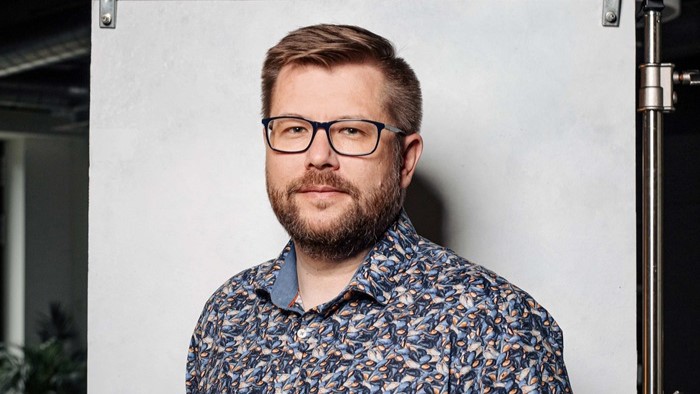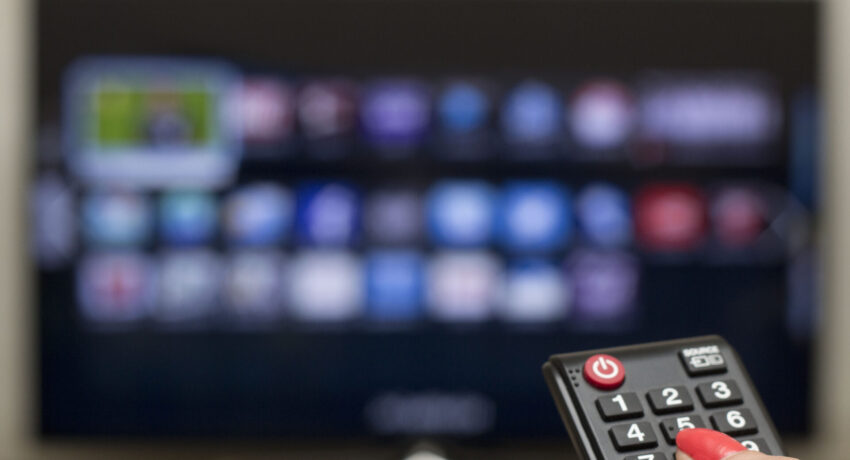In June, the government will be submitted a bill to increase TV fees. “They should not be increased before the state says what kind of public service it expects,” says Pavel Kubina, Director for Media Law Issues at Prima Group.
Last autumn, the Ministry of Culture announced that it wanted to increase television and radio fees. At the same time, it wanted to expand the range of payers. The entire private media sector vociferously opposed the first version of the amendment. The Ministry then invited representatives of commercial media to join working groups to discuss the law with them.
After half a year, a second version was prepared, and it is described in detail in this article. According to the second version, the public service is to be specified in a special memorandum concluded between Česká televize (Czech Television), Český rozhlas (Czech Radio) and the Ministry. At the same time, the law will restrict the broadcasting of sponsorship messages on Czech Television. The amendment is expected to be approved by the government in June, passed to the Chamber of Deputies in July, and come into force at the beginning of 2025.
Pavel Kubina, Director for Media Law Issues at the Prima Group, points out that there are still many gaps in the amendment.
How do you assess the current wording of the major media amendment compared to the autumn version?
Compared to the autumn, there are some partial improvements in the proposal. But the basic problem has not disappeared: the ministry is building a house from the roof down. European state aid law clearly obliges Member States to make the definition of a public service as precise as possible. This is not the case with the amendment where the Ministry refused to modify the current elastic and unspecific clauses defining public service in the Czech Television and Czech Radio Acts. The Ministry has admitted that a memorandum will be adopted, but this will not see the light of day until six months after the fees have been increased. This seems to us to be very illogical. First, the fees are increased and then it is established what a public service is. That does not make sense.
The law probably cannot be completely specific by its nature, it always just sets boundaries. Isn’t a memorandum an elegant solution?
In terms of state aid, this is also a legal problem. If the European Commission were to investigate it, it would not be able to say whether the money would be spent on a public service or something else. We have proposed that what the law can bear should be in the law and the rest should be in the binding rules for the performance of the public service. We wanted the binding rules to be approved by the Chamber of Deputies, just as the Code of Conduct of Czech Television is approved. In some respects, the Minister’s proposal is similar. We agree that a more detailed definition of the public service should be in another document, not in a law. However, we disagree with the Ministry on whether what is in the law today is sufficient. We think that something should be added and that the existing sections defining the public service simply have to be adjusted.
When introducing the amendment, the Minister of Culture said that the existing 1991 definition was still sufficient. In what way do you think it is ‘elastic’?
I will give you two examples. The law sets out what the main public service tasks are in the field of television or radio broadcasting. However, the list of the tasks is preceded by the phrase ‘in particular’. This implies that there are some other tasks, both major and minor, but nobody knows which they are. So, it is not clear what activities of Czech Television or Czech Radio are included in a public service. That is the problem. Another such problem is multimedia content. Both institutions can create multimedia content according to their laws. In Europe, it is usual that there is some kind of specification of what television and radio can do as public services and what they may not do. There is nothing in our law about that, just all multimedia content.
Is it supposed to be in the law? As far as I know, in neighbouring Germany it is regulated by an interstate treaty, for example, restricting sports content on the internet.
In practice, however, the treaty acts like a law in Germany. I think there is even a negative list in the annex of what the civil service must not do. We feel that in our country, Sections 2, 3, and 3a of the Czech Television Act need to be improved. In our view, the current wording does not stand up in the light of European law, and we and the Ministry have different opinions on this. We agree on the existence of another document to be adopted for five years that would specify in more detail what the public service should do. We still have some problems with the way the memorandum is to be drafted, whether it will be binding on Czech Television and Czech Radio at all, and how its final content is to be linked to the level of the fee.
Let me remind you that the draft memorandum is to be drawn up by the CEO of Czech Television or Czech Radio, then approved by the respective Councils and signed by the Minister of Culture. The ministry is making it clear that the state does not want to have any say in the content. Why is this wrong?
It is exactly the opposite of how it should be. It is the task of each state to actively define what it wants as a public service, and what it demands. The ministry cannot sit back and pretend that the actors can sort it out among themselves. That is the state’s task. It is the guarantor of media legislation and creates state demand. It has to say what we want as a public service in the Czech Republic. As a result of the construction that has been proposed by the Ministry, the fees are independent of the memorandum. Moreover, it is not at all certain that the memorandum will come into being.
Is there no enforcement instrument in the amendment for the memorandum to be adopted?
What happens if the CEO of Czech Television does not sign it, or if the Minister of Culture does not sign it, or if the Council does not approve it? There will be no memorandum. So, what is all the fuss for then? The requirement under European law to define the public service as precisely as possible exists so that commercial media have an idea of what a public service will be and can plan accordingly. We wanted the law to at least enshrine the right of media associations to be present at the negotiation of the memorandum, and the Deputy Minister of Culture, Michal Šašek, has been positive about this, so we hope that this will be reflected in the final text of the draft amendment.
If the fee provisions are delayed until after the memorandum is approved, would that be more feasible for you?
Definitely. We do not think that there should be an increase in fees before the memorandum. And the fees should reflect what will be in the memorandum. It must first be clear what the public service is, and then it should be decided what the necessary budget for the service is.
Commercial media were concerned in the autumn that the fee increase would upset the market balance. The ministry says that the redrafted amendment will bring Czech Television about CZK 865 million, plus it will remain exempt from VAT deduction. What do you think about these provisions?
We have never seen the calculation, so we do not know how the Ministry arrived at these figures. The method of calculation has never been made clear to us. In our internal calculations, the amounts were much higher. It would have been right for the Ministry to put its calculation somewhere on display and subject it to public debate.
In addition to fee income, the amendment also addresses income from commercial communications. It leaves advertising as it was, but limits sponsorship to a maximum of 260 hours per year. Has this alleviated your concerns?
Although the amendment provides for a limitation of the overall scope of sponsorship messages on Czech Television programmes (which does not necessarily imply a change in revenue), it does not in any way regulate the transfer of the volume of sponsorship messages between individual programmes. We, therefore, propose that a maximum limit be set for sponsorship on individual programmes.
You have also commented on commercial communications on the internet. If I understand the Ministry’s representatives correctly, they will restrict them so that nothing can be included in programmes produced for the internet, and archived programmes can only keep what cannot be separated from them, such as product placement. What is your position on this new regulation?
It is difficult to answer because the Ministry has declared what you say, but the final text it has produced is different. It says that there should be no limit at all on commercial communications in on-demand audiovisual media services, whether on the internet or apps. It would give Czech Television a free hand to put anything on on-demand services, not only product placement or sponsorship but also advertising specifically on these services. We hope that the Ministry will correct this in the amendment. We have the idea that on-demand services could include product placement in shows that have been on television or production sponsorship announcements, but no advertising.
But the ministry has repeatedly assured that it does not want to distort the market. It only seeks to ensure sustainable funding and a new public service model. Do you still see anything there that threatens the commercial sector?
We find this sequence of considerations dangerous, money first and then thinking about what the public service should produce. As it is now, the public service media are a self-defining machine. And unfortunately, that is to continue under the Minister’s proposal.
So should the public service definition go, for example, in the direction of not being allowed to broadcast certain types of sporting events or entertainment?
Yes, or setting a limit for such events. What we want is for the principle of complementarity to what commercial stations produce to be enacted in some way. That is the very purpose of the public service: to plug the gaps that the market will not cover and to serve those audience segments for which there is insufficient supply elsewhere. I am not saying this is the only purpose, but the primary one. And it should be included in the memorandum in some form.
I have read a number of foreign memoranda and laws. They differ in parts, but it repeatedly appears in the definitions that public service should be universal and address the entire spectrum of the population regardless of age, education, or other parameters. If it is supposed to reach the whole society that pays for it, can anything be cut off from it?
There is no requirement in international or EU law for a public service to be universal. I do not dispute that it could be so in the Czech Republic, but it is not a legal obligation. Each state has the right to define what it considers to be a public service as it wishes. Universally or not.
I don’t know any state not treating public service universally.
Even if the state conceives of a public service in universal terms, this does not mean that it cannot set priorities or, on the contrary, limits on something within its framework. It is simply up to the state to decide. There are even states that do not have a public service broadcaster at all. But I would like to stress that we have always been and still are in favour of a dual system. We are in favour of public service media being strong. The problem starts when support for them should be boundless and should not take into account the rest of the media ecosystem. We don’t want any systemic change, just what we are entitled to, which is the most “accurate” definition of public service.
The amendment does not directly specify what the memorandum should look like and what it should contain. What should it contain to keep the dual system fair in the eyes of commercial entities?
We have drafted our proposal for binding rules for the performance of public service, which we have sent to the Ministry and Czech Television. For example, we proposed that there should be a minimum proportion of the total broadcasting time that Czech Television would devote to topics and genres taking into account the needs and interests of small target groups. Or that regional news would be given a percentage of the airtime of the main news programmes. Or that, except for the Olympic Games, Czech Television should not compete with private TV stations for the rights to commercial sports competitions.
TV Prima’s draft proposal for binding public service rules (PDF)
Did you take inspiration from abroad?
There were a few models from the EU, but it was more of a loose inspiration. Our proposal responds to the situation in the Czech media market.
You mentioned the European rules on state aid. Is it possible to say in simple terms how the media amendment can be controversial from this point of view?
First, the margin of increase over the current level is substantial. This in itself may determine whether an obligation to notify the European Commission arises. Then there are other circumstances that may trigger the obligation even if the threshold is not exceeded. Someone should deal with this honestly so that this problem does not arise.
What would you say about funding a public service with an across-the-board fee or a share of the taxes collected?
In some countries, they have a flat fee or a certain share of the taxes collected, but there are commissions that assess the public service and the current market situation and say how much money the public service media should get from the funds collected. That may correct the flat rate a little bit.
Source: lupa.cz
























